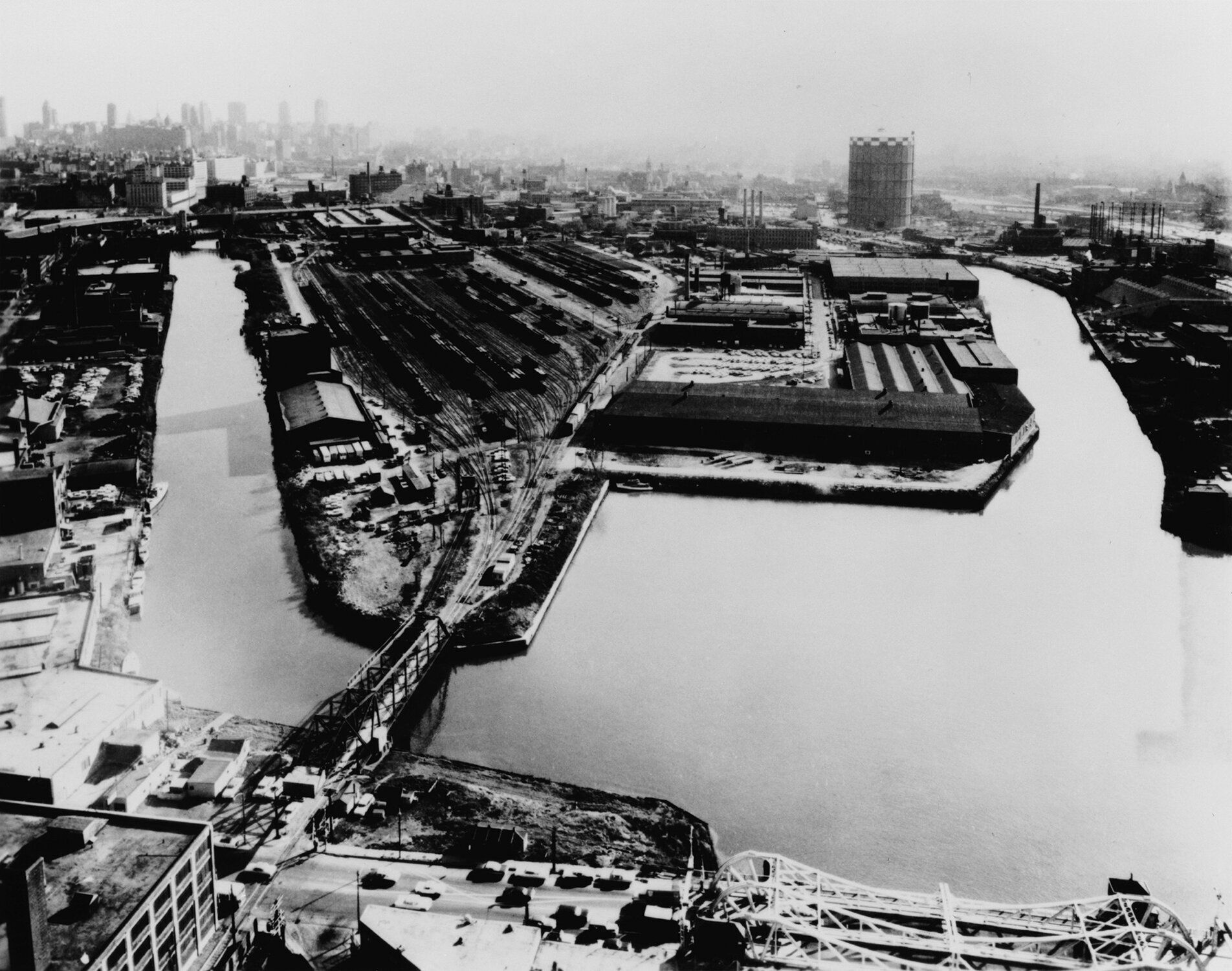
Goose Island’s past and future
New and upcoming adaptive reuse projects on the 160-acre area known as “Goose Island” continue to be in the news. With all the talk about the area, we thought we’d delve into the past and recount the story of how this odd island came to be.
New and upcoming adaptive reuse projects on the 160-acre area known as “Goose Island” continue to be in the news. With all the talk about the area, we thought we’d delve into the past and recount the story of how this odd island came to be.
Adapted from material written by MacRostie Historic Advisors LLC
CREATING THE OGDEN CANAL
Goose Island’s story begins in the 1850s, when William Ogden, Chicago’s first mayor, spearheaded an effort to improve the navigability of the Chicago River’s north branch. A canal, known as the North Branch Canal or Ogden’s Canal, was dug from Chicago Avenue to North Avenue to circumvent the bend in the river and create more waterway frontage for industrial use.
Around the same time, Chicago emerged as the most important railroad center in the country. By the late 19th Century, railroad tracks radiated from Chicago in more directions than any other city. Industrial development boomed on Goose Island because of the city’s network of rail lines and canals. By 1886, fire insurance maps showed that the island was home to:
- 13 lumber yards
- 11 coal yards
- three stone yards
- two slab yards
- two sand yards
- two grain elevators
- several tanneries
- a varnish company
- a mattress factory
- a shipyard
- a roofing manufacturer
- a paint works
- a malt house
- a box factory
GOOSE ISLAND’S INDUSTRIAL BOOM
The same advantages that made Chicago a hub for grain and livestock industries also made the city a major furniture manufacturing and warehousing center. Wholesalers like Marshall Field and mail-order retailers like Montgomery Ward saw the benefit of using the network of railroads that brought grain and livestock into the city for processing as a distribution system. These rail lines delivered finished goods cheaply and efficiently to far-flung farming communities.
The extensive railroad network also provided access to lumber for furniture production, and the city’s German and Scandinavian immigrants provided a ready pool of skilled labor. As furniture manufacturing sprung up along the Chicago River, so did the number of furniture wholesalers that served as the critical link between manufacturers and consumers. By 1926, Chicago was home to 255 furniture wholesalers with sales totaling more than $58 million.
STEMMING THE DECLINE OF INDUSTRY ON GOOSE ISLAND
The Great Depression halted the seemingly relentless expansion of Chicago’s manufacturing and wholesale operations. Though many companies closed their doors, Goose Island continued to be an important industrial center on Chicago’s north side through the 1970s.
In the early 1930s, the city began construction of a viaduct that would extend Ogden Avenue across Goose Island. Planners speculated that connecting the Island to the city’s limited access highway system could help stimulate industrial development. Despite this effort, Goose Island’s industries continued to decline as manufacturers and wholesalers left the city. Today, only a handful of the 20th-century industrial buildings remain. Much of the historic industrial built environment, including the viaduct, has been demolished over the past 30 years.
CHICAGO’S NEW MANUFACTURING AND TECH HUB
In recent years, Goose Island has experienced new growth. As one of the last remaining underdeveloped areas within 3 miles of Chicago’s downtown, Goose Island has garnered a lot of attention from potential real estate developers.
Advanced manufacturing and technology companies are particularly interested in Goose Island, where the thick floors of the remaining historic industrial structures make them suitable for a new use: housing the heavy and hot equipment needed in tech companies.
One of the most recent adaptive reuse projects on Goose Island is the federally-funded Digital Manufacturing and Design Innovation Institute that now anchors the area. The Institute occupies a 94,000-square-foot facility in the former Republic Windows & Doors Inc. building at 930 W. Evergreen Ave. But it isn't the only organization to adapt and reuse a historic building on Goose Island. Groupon renovated several floors of the former Montgomery Ward Catalog Warehouse, and Amazon.com intends to build its first Chicago warehouse on Goose Island. It’s clear that the pace of development on Goose Island has no intention of slowing down. What was once an industrial hub is quickly transforming into a manufacturing and technology hub for the city.
